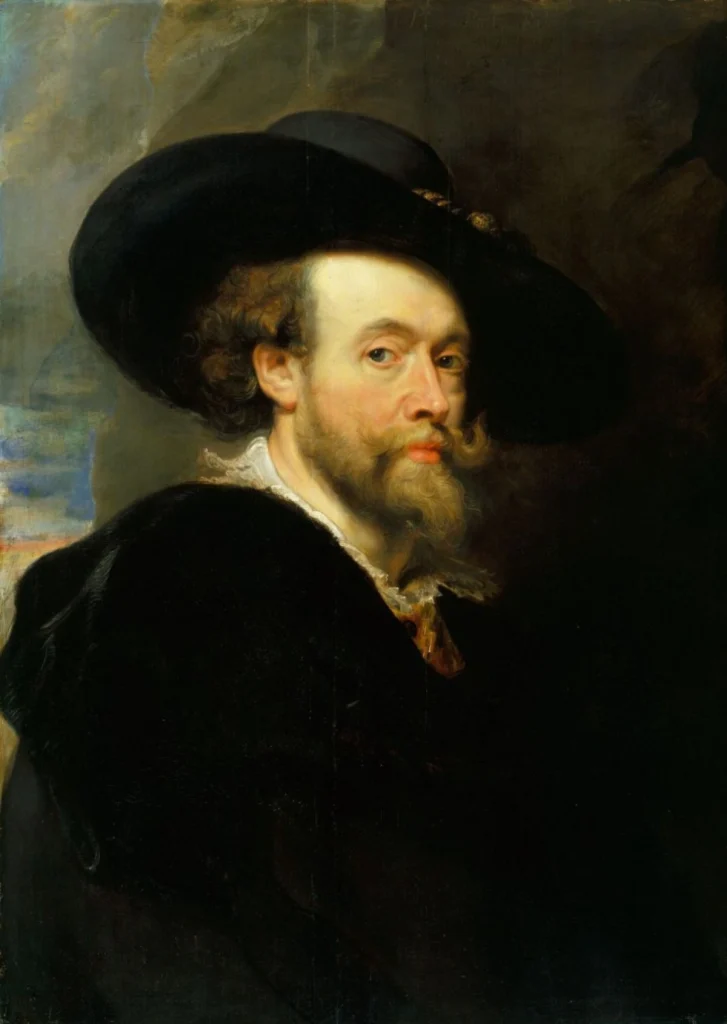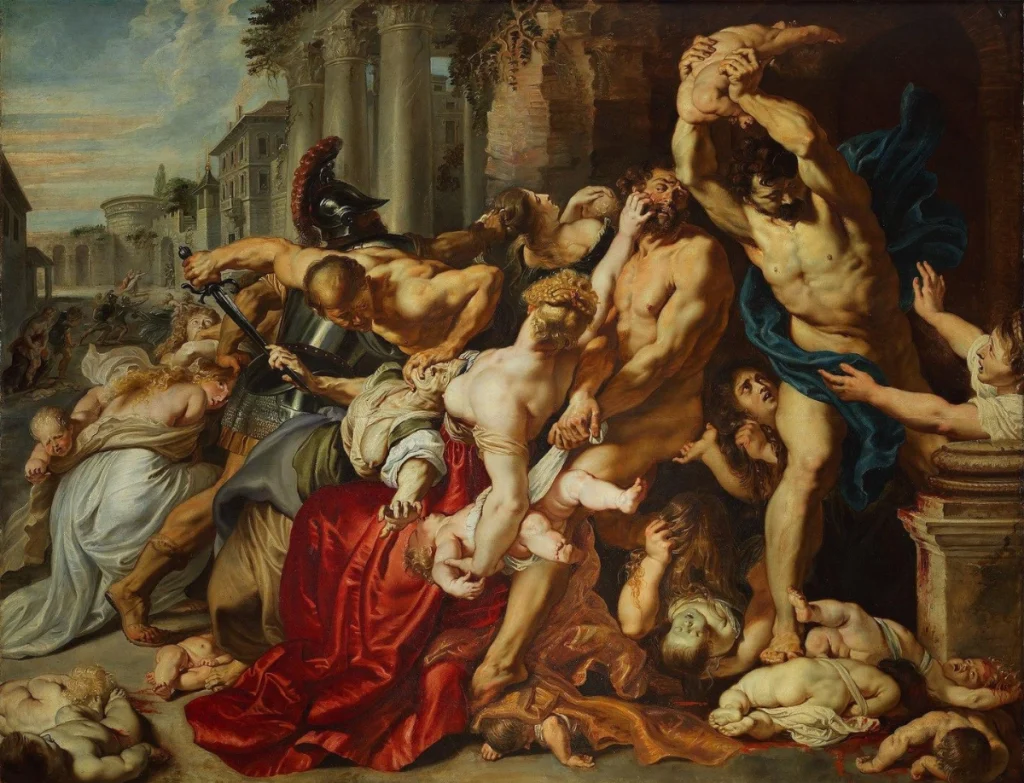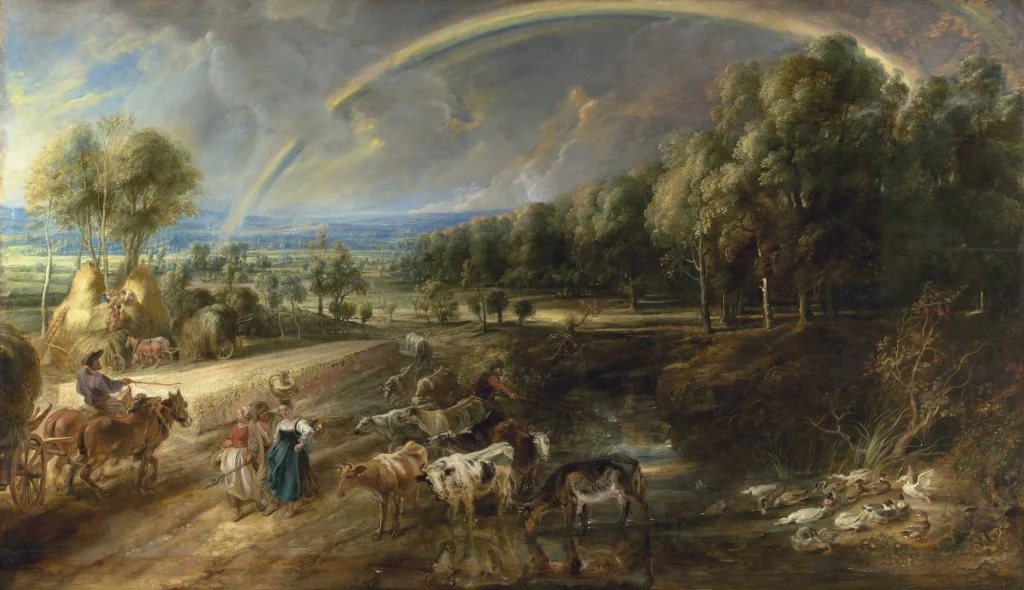Who Was Peter Paul Rubens
“I paint a woman’s big rounded buttocks so that I want to reach out and stroke the dimpled flesh”
Peter Paul Rubens
Peter Paul Rubens is most renowned for his brash and expressive paintings. With vivid colours and a strong feeling of motion, he produced expansive, dramatic scenes. Rubens is famous for his amazing compositions brimming with vigour and force. The most well-known painter of his day, Rubens, had a remarkable outlook on both life and art.
He was an exceptional person. He was not only a hugely successful painter whose studio created an astounding number of pieces, but he also had a significant diplomatic impact on European politics in the 17th century. Being described as having “a towering stature, a regal bearing, with a regularly formed face, rosy cheeks, chestnut brown hair, bright eyes, yet with passion restrained, a smiling air, gentle and courteous”, he was a pleasant and appealing companion.

Courtesy – Royal Collection Trust
Rubens was raised a Roman Catholic and acquired a classical education. In 1591, he began his artistic apprenticeship with Tobias Verhaecht. After a year, he moved on to spend four years working with Adam van Noort. Before departing on his travel to Italy in May 1600, he served as Otto van Veen’s apprentice in Antwerp and was admitted to the city’s painters’ guild in 1598. His commissioned works were primarily historical paintings, some of which featured mythological and religious themes as well as hunt scenes.
In addition to self-portraits and portraits of acquaintances, he also painted some landscapes in his final years. Along with designing his own home, Rubens also created tapestries and prints. Rubens’ style has influenced painters for a very long time because it emphasises life, dynamism, and the preference for colour over line. Among his early admirers were the Flemish painter Anthony van Dyck and the Spanish painter Bartolomé Esteban Murillo.
The relative importance of line and colour was a topic of discussion between Rubenists and Poussinists in France near the end of the 17th century. The primary female character of French artist Eugène Delacroix’s Liberty Guiding the People is said to have been influenced by a Bellona, a Roman warrior goddess, who appears in Rubens’ Apotheosis of Henry IV. Delacroix was a major admirer of Rubens in the 19th century.

Courtesy – Art & Object
11 Lesser-Known Facts About Peter Paul Rubens
- In 1600, Rubens went to Italy to study both the ancient and modern masters’ paintings and from there Italy became his inspiration.
- One of the reasons Rubens returned to his hometown from Italy in 1608 was to care for his sick mother.
- Rubens was a good businessman and employed several engravers in his workshop, who reproduced his work on sheet metal, which could be easily duplicated and sold. Rubens also formulated one of the very first versions of today’s modern copyright, which banned competitors from making money from his work.
- He started an apprenticeship with famous Mannerist painter Tobias Verhaeght at the age of 14.
- He wasn’t just hired as a painter but also as an ambassador and diplomat in the court of the rulers of the Habsburg Netherlands.
- He even published a book in 1622 which was based on drawings he made of the palaces in Genua referred to as Palazzi di Genova.
- The artist-turned-envoy contributed to negotiating peace between England and Spain, ending the Anglo-Spanish war in 1630. His diplomacy skills even earned him a knighthood—twice, in fact, from both Philip IV of Spain and Charles I of England.
- At the age of 53, he married a 16-year-old, who was the niece of his first wife.
- Rubens wrote in five languages: Italian, Flemish, French, Latin, and English.
- Rubens was an art collector himself. His treasures had 324 paintings, 7 ivory sculptures, and even an Egyptian mummy.
- In his paintings depicting women, there were always two prominent colors, white and red, because he believed that women are a mixture of blood and milk.
Image – Peter Paul Rubens. The Rainbow Landscape, c.1636. Courtesy – The Wallace Collection
Contributor





